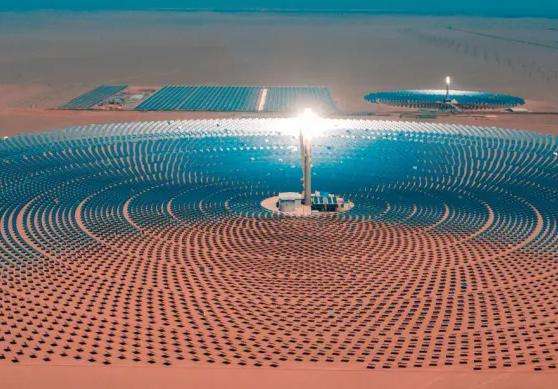1. Photovoltaic power generation is to convert light energy directly into electrical energy. The key is light. The light at night is too weak, so it cannot generate electricity. Even if there is light on cloudy days, it cannot be used to generate electricity. Therefore, photovoltaic power generation must be equipped with batteries and inverters. At night and on rainy days, batteries and inverters are used to provide power.
2. Wind power also has this problem. When there is no wind or the wind is too low, batteries and inverters must be installed.
3. Theoretically, "photovoltaic power generation" uses optoelectronic devices to convert light energy into electrical energy. As long as a photon is incident, it converts the energy of the photon into electrical energy (emits the same energy as a Photon energy is equivalent to electrical energy; at night, as long as there are still photons (regardless of whether people can feel it) that shine on the optoelectronic device, there should still be electrical energy generated. However, when the number of photons is too small and the energy value is too small, it cannot even be measured. , we think it’s just because there is no electricity.
4. A calculator powered entirely by photovoltaics will work normally under light at night as long as the light intensity is sufficient.
More about photovoltaics. Will there be any impact if power generation occurs at night? Enter: https://m.abcgonglue.com/ask/e15d981616104662.html?zd to view more content
Wind power and photovoltaic power have obvious seasonal and fluctuating wind power and the proportion of photovoltaic power generation
Wind power and photovoltaic power generation have obvious seasonality and volatility, and the increase in the proportion of wind and photovoltaic power generation will affect the stability of the power system
Wind power mainly relies on wind energy, a natural energy source. Since wind speeds in different regions are closely related to climate change, the supply of wind energy also has significant seasonality, such as during periods of active monsoons such as winter or spring. The wind resources utilized will be more abundant; in summer or other dry, less rainy environments, the availability of wind resources may be affected by factors such as sandstorms.
At the same time, some specific geographical locations ( (such as mountains) also have certain requirements for wind stability. This means that power production will fluctuate at different points in time. Although modern technology can smooth these fluctuations by storing excess power, there are still certain challenges and Technical limitations. ?
Solar photovoltaic (PV) systems, on the other hand, operate by converting light into electricity. However, the intensity of sunlight also changes with changing weather conditions, including cloud cover. , sunshine time and ultraviolet radiation intensity, etc. These will affect the photoelectric conversion efficiency, thereby further affecting the stability of power output.
The principle of wind power generation
The device required for wind power generation is called a wind turbine. This wind turbine can be roughly divided into three parts: wind wheel (including tail rudder), generator and tower.
The wind wheel is an important component that converts the kinetic energy of the wind into mechanical energy.It consists of several leaves. When the wind blows towards the blades, aerodynamic force is generated on the blades to drive the wind wheel to rotate. The material of the paddle requires high strength and light weight, and is often made of fiberglass or other composite materials.
The iron tower is the structure that supports the wind wheel, rudder and generator. It is generally built relatively high in order to obtain larger and more uniform wind force and to have sufficient strength. The height of the tower depends on the impact of ground obstacles on wind speed and the diameter of the wind wheel. It is generally in the range of 6-20 meters.
The function of the generator is to transfer the constant rotation speed obtained from the wind wheel to the power generation mechanism through increased speed for even operation, thereby converting mechanical energy into electrical energy.
Why does the power grid limit the power generation of wind power plants and photovoltaic power plants?
The impact of this proportion is as follows:
1. Wind power is usually stronger in spring and autumn, so the wind power generation will be relatively high in these two seasons. In summer and winter, due to weakened wind, wind power generation will decrease accordingly; photovoltaic power generation will be lower in summer and winter. It is higher on sunny days because the sunshine time is long and the intensity of solar radiation is high. In winter and cloudy days, photovoltaic power generation will decrease.
2. The volatility of wind power and photovoltaic power generation is mainly affected by weather conditions, such as changes in wind speed, cloud cover, etc., which will lead to unstable power generation.
Both wind power and photovoltaic power generation are time-sensitive and accidental. If it is cloudy or the wind stops that day, the wind power and photovoltaic power generation must stop, but the load cannot stop, so the power grid must immediately start the thermal power generation unit to fill the gap. However, it takes several hours for a completely stopped thermal power generation unit to start, so in order to be able to fill the gap immediately, some units need to be operated at a small load to be able to cope with this situation. However, these capacities are limited, so the power grid must limit the power generation of wind power and photovoltaic power according to the reserve capacity














